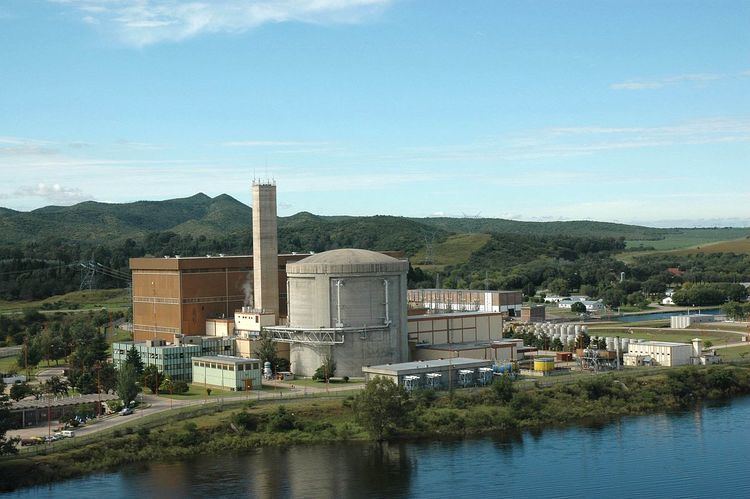Reactor type PHWR Phone +54 11 4701-7070 | Commission date January 20, 1984 Construction began 1974 | |
 | ||
Official name Central Nuclear Embalse Address Camino La Cruz, Ruta provincial E62, 5856 Embalse, Córdoba, Argentina Hours Open today · 9AM–8PMThursday9AM–8PMFridayClosedSaturdayClosedSundayClosedMonday9AM–8PMTuesday9AM–8PMWednesday9AM–8PM Province Córdoba Province, Argentina Similar Atucha I Nuclear Power Pl, Pressurized heavy‑water reactor, Gentilly Nuclear Generatin, El Chocón Dam, Qinshan Nuclear Power Pl | ||
The Embalse Nuclear Power Station (Spanish: Central Nuclear Embalse) is one of the three operational nuclear power plants in Argentina. It is located on the southern shore of a reservoir on the Río Tercero, near the city of Embalse, Córdoba, 110 km south-southwest of Córdoba City.
The plant is a CANDU Pressurised Heavy Water Reactor (PHWR). It employs natural uranium (that is, with 0.72% of 235U), and uses heavy water for cooling and neutron moderation. It has a thermal power of 2,109 MWth, and generates 648 MWe of electricity, with a net output of about 600 MWe, supplying nearly 4.5% of the production of the Argentine Interconnection System (2005).
Additionally, Embalse produces the cobalt-60 radioisotope, which is employed in medicine (cancer therapy) and industrial applications. Argentina is one of the largest producers and exporters of this isotope in the world, along with Canada and Russia.
Embalse was started in 1974 and began operation in 1983 (first criticality March 13, 1983, declared commercial Jan 20 1984). It was built by an Italian-Canadian consortium formed by AECL, acting as the "turn-key" supplier of the nuclear portion, and Italimpianti, the "turn-key" supplier of the conventional portion.
On 31 December 2015, the plant was taken offline, having completed its first operating cycle of about 30 years.
On 1 September 2016, the plant received the last two of four steam generators, fundamental elements for the life extension of the plant. The plant is being reconditioned to deliver power for another 30 years: the replacement of the four steam generators is one of the key steps. The plant is expected to be offline until 2018.
